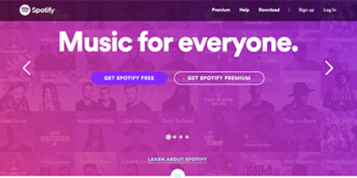Many “serial entrepreneurs” are flocking to app development in hopes of creating the next Snapchat. The harsh reality is that this endeavor is significantly less likely to result in success than many other traditional small business ventures. The deck is strongly stacked against app development startups – and here is why. The average smartphone user downloads somewhere between 0 and 1.5 apps per month. Additionally, the average Android app maintains only 4% of its daily active users after 90 days. Finally, nearly 85% of smartphone app time is spent in a user’s top 5 apps!
All of these facts combined means that making the next big thing is incredibly unlikely. It would be a better idea to take a related, but slightly different approach. That alternative approach is building apps that your customers have to install and use on a daily basis. These daily usage apps include internal-use apps that businesses or professionals employ to improve the way they work. This article will explore what these apps look like and the advantages they have over consumer-facing mobile apps. Internal-use mobile applications might not have as large a reward as mass-market apps, but the increased likelihood of success is well worth the tradeoff.
A brief history of business software
Today, many employees spend the majority of their time using software that is built specifically to help them conduct their work. Popular examples are content management systems (CMS), customer relationship management (CRM) platforms, and business process applications. For all of these solutions, there are industry-agnostic solutions (such as Salesforce) and industry-specific utilities. Most of these are web-based, and hopefully most of those are now mobile-responsive. These applications have provided a major step forward and have led to an increase in productivity, reliability, and profitability. For these reasons, thousands of companies, such as Slack or more specialised tools like Docket Navigator, have succeeded simply by targeting businesses and creating for-work applications.
Business Apps go Mobile
Savvy app creators will immediately see (and have been observing) how mobile apps are the next step in business software. As business continues to be conducted in more remote and dispersed environments, the mobility and flexibility of mobile apps becomes more invaluable. Furthermore, the added intelligence provided by location services, the direct communication achieved through push notifications, the resiliency offered by offline functionality, and the ever-present nature of smartphones create a compelling case to go mobile-first. Many of the best business software applications are already mobile or are supplemented by mobile companion apps (such as Constant Contact or Trello). This is a reliable and proven opportunity for success.
Business Vs. Consumer Mobile Apps
Now that it is clear that business mobile apps can succeed, I want to explore some of the primary reasons why these sorts of apps are more primed for success than apps that directly target the general public. The primary differences include how business apps are marketed, how they produce revenue, and the differences in development costs.
Business Vs. Consumer Mobile Apps – Marketing
Many first-time app creators fail to realize how difficult and expensive it is to market an app. Most app marketing companies require a budget in the high tens of thousands (if not low hundreds of thousands). This is often at a remarkably high cost per install (CPI). At the same time, an app must continually engage with existing users, or it will risk losing users as quickly as it gains them. The marketing costs required to build and maintain the user base required for most apps to succeed is enough to sink most startups.
Marketing a business-targeted app is not free or trivial, but it is often substantially cheaper to get started. Rather than having to build some critical mass or achieve widespread adoption, many for-business apps can succeed by targeting individual customers and building their subscriber base over time. Instead of having to convince thousands of consumers that an app is worth downloading, these app owners only need to convince a few key decision makers. One leader deciding to utilize a platform can instantly lead to hundreds or thousands of downloads. When the time does come to do slightly more general marketing, many business apps are also able to make great use out of industry trade shows and publications.
Business Vs. Consumer Mobile Apps – Revenue
Another thing that many inexperienced app owners fail to consider is how difficult it is to start making money. Many consumer-facing apps forgo revenue in search of frictionless downloads. Even some of the biggest apps in existence struggle to make a profit with these sorts of apps.
Business apps have a much more traditional and straightforward approach to revenue and provide a clearer path to profitability. Unlike consumer apps, where nobody is willing to pay for a download or a subscription, businesses expect to pay per-person and per-month when they use an application. Additionally, unlike consumer apps where revenue does not increase with downloads, business apps have a near-linear relationship between users and income.
Business Vs. Consumer Mobile Apps – On-going Development
The majority of consumer apps are consistently being updated with fixes, changes, and new features. These changes are typically time consuming and expensive. In addition, most will not directly increase the profitability of the app or will take considerable time to meaningfully “move the needle”. In addition, consumer apps go to great lengths to onboard new users through first-use experiences, tutorials, and drip campaigns. These sorts of highly polished and carefully designed elements are particularly time consuming to create.
Business apps are able to avoid many of these issues. Although they need to be easy to use, they can also rely on external training materials that can be improved without developer involvement. This means that designing and developing first-time use experiences and tutorials are much less necessary. Furthermore, much ongoing development is in service of new revenue opportunities. This is because as new features are requested and built, they can be sold as add-on features to existing customers and can therefore be quickly profitable.
In Defense of Consumer Apps
This article is primarily intended to shine light on an often undervalued and less sexy type of app. That being said, it would be foolish to argue that only one type of app can make for a good startup idea. Here are some quick downsides to creating a for-business app, rather than a consumer-facing product (please keep in mind these are generalizations):
- A smaller max user count
- A more linear revenue growth expectancy
- Requires more hands on sales and customer support
- Might require more legal support to handle individualized contracts and contract negotiations
- Might require per-customer integrations and/or customizations
- Often an easier target for competitors to copy and undercut a business app
Conclusion
Many of the most successful apps I have worked on have been intended primarily for business use. They are not guaranteed to succeed, but they do seem like a safer bet in many cases. As someone who tends to be more risk-averse and has slightly more grounded aspirations, I would happily take the drawbacks often associated with this type of product. At the very least, it is worth considering for any would-be app creator.






